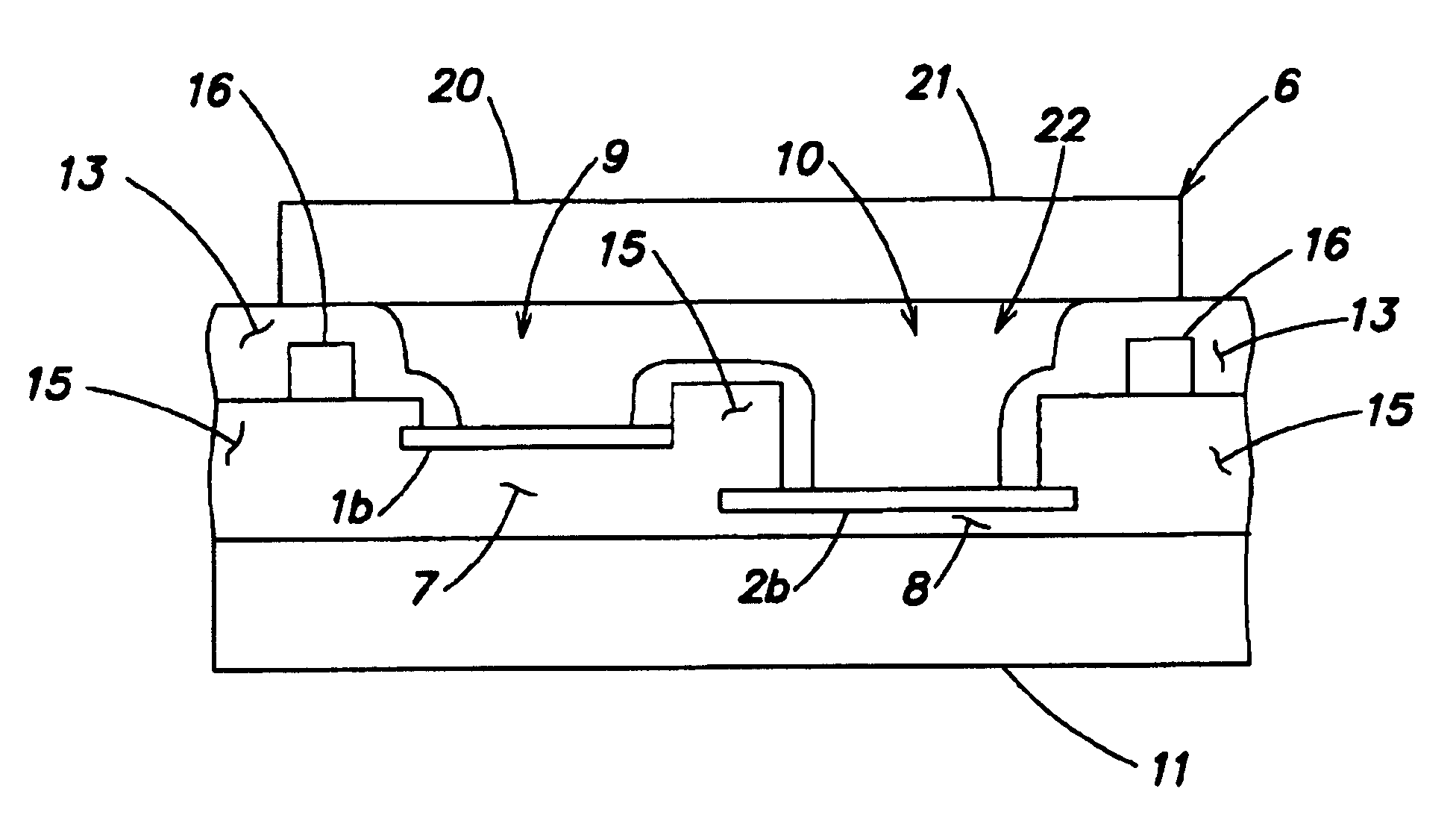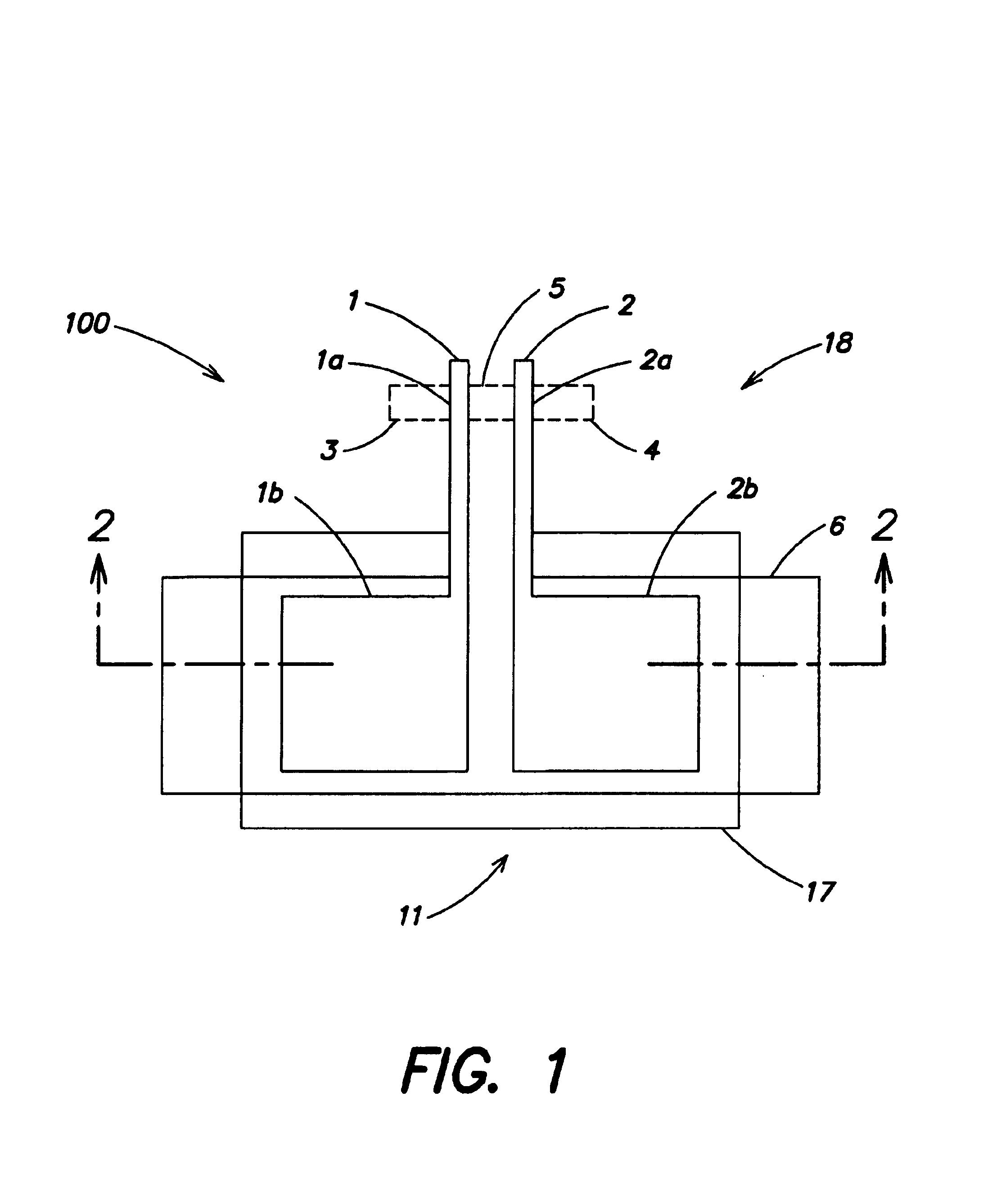Sensor for measuring an ion concentration or gas concentration
- Summary
- Abstract
- Description
- Claims
- Application Information
AI Technical Summary
Benefits of technology
Problems solved by technology
Method used
Image
Examples
Embodiment Construction
[0014]FIG. 1 illustrates a sensor 100. The sensor includes a first n-doped drain 3 and a second n-doped drain 4 as well as an n-doped source 5 are formed in a second section 18 of a substrate 11 formed here as a silicon p-substrate by ion implantation. A thin oxide layer is applied between the first and second drains 3, 4 and the source 5, which for example can be about 8-20 nm thick and serve as a gate dielectric. A transducer is formed by the first and second drains 3, 4, the common source 5, and the thin oxide layer.
[0015]A thick oxide area with a first thick oxide layer 7 offset in one lengthwise direction with respect to this transducer and a thinner second thick oxide layer 8 that is offset laterally, are formed in a first section 17 of the substrate 11, as shown in FIG. 2. A first conductive layer 1 and a second conductive layer 2 that are offset laterally from one another, are applied to the thin oxide layer and the thick oxide layers 7 and 8, which however are not formed ne...
PUM
 Login to View More
Login to View More Abstract
Description
Claims
Application Information
 Login to View More
Login to View More - Generate Ideas
- Intellectual Property
- Life Sciences
- Materials
- Tech Scout
- Unparalleled Data Quality
- Higher Quality Content
- 60% Fewer Hallucinations
Browse by: Latest US Patents, China's latest patents, Technical Efficacy Thesaurus, Application Domain, Technology Topic, Popular Technical Reports.
© 2025 PatSnap. All rights reserved.Legal|Privacy policy|Modern Slavery Act Transparency Statement|Sitemap|About US| Contact US: help@patsnap.com



